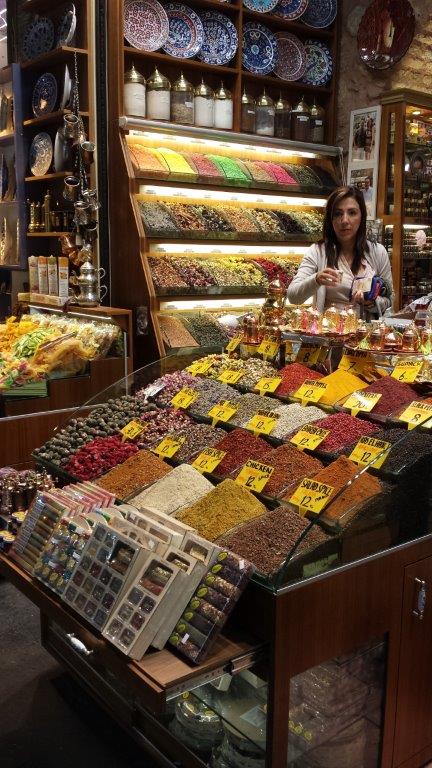
Economic botany

Grand Bazaar Istanbul
Spices
Image: Roger Spencer, May 2014
This article is an introduction to a series of articles discussing the commercial aspects of plants.
Introduction – Economic Botany
When plants are important to people then they acquire special value. This subject is discussed under the general topic of plants and people which emphasises the historical, scientific, and sustainability aspects of plants. For general lists of economic plants – staple crops, vegetables, fruits, herbs, spices etc. see the article plants for people.
This article is about economic botany – the plants used in commerce. To set the scene we begin with an article on cultivated plant globalization which gives an historical overview of the way major commercial groupings of plants arose historically and the phases of their distribution around the world by trade. Five major plant grupoings are recognized: the medicinal plants, herbs, spices, and psychotropic kinds favoured in ancient societies by spiritual, religious, wealthy, academic, and powerful community leaders; the mostly temperate cereals and a crops that were so important during the Neolithic Agricultural Revolution; the spices that launched the European Age of Discovery and colonization; the horticultural crops that were spread, largely by Europeans, through the tropics in the 18th century; the introduction to Europe of ornamental plants, beginning in the 16th and gathering momentum into the 18th and 19th centuries. This is a brief outline of the commercial forces that transformed natural into cultural landscapes across the world.
Plant uses
The ways that different cultures use plants in their daily lives are dealt with under that aspect of economic botany called ethnobotany. We use plants as food (e.g. grains, roots and tubers, vegetables and leafy greens, herbs, fruits, nuts, and pulses); food and drink additives (spices, sweeteners, flavorings, and colorings etc.); psychoactive plants (tobacco, tea, coffee, opium, cannabis, alcoholic drinks, mescalin, heroin etc.); poisons (strychnine); for medicines and drugs; fibres (cotton, hemp, flax, sisal etc.); dyes (indigo); perfumes and aromas (rose, jasmine, pot-pourri, incense); oils (lavender, ulan, olive), fats (avocado), waxes (beeswax); resins (for varnishes, adhesives, glazes); rubber; wood (as timber, fuel, source of paper); as a source of structural materials and also for decoration.
One way of describing economic plants is to proceed alphabetically, chronologically, or preferentially through a list of ‘useful’ plants and it seems that this can be covered adequately by confining ourselves to about fifty plants though we might differ in our views on about 20-30% of those that should be included.[2]
Numbers
What were the individual starring plants that played a major role in the history of humanity – in pre-history, the classical world, and through to the modern era as the number of recorded flowering plant species has escalated from about 500 or so in the Classical world, to 10,000 in the 1750s (Linnaeus estimated the number of species in the world to not exceed this number), and about 250,000 today.
The article Major world plants provides a summary account or an aide de memoire of the major plants of significance to humanity, past and present – ranging from major crops, medicines, and structural materials to those that have collectively generated our global economy, the ravages wars, and the injustices of slave plantations. Most of these plants are of economic significance.
Industrial development for pharmaceuticals, packing materials, laundry chemicals (collar starch), and various other starches (dextrin, refined corn oil, molasses, lactic acid, sorbitol, mannitol, methyl glucoside), a flour, corn syrup as a sugar substitute which after further processing can converted glucose to the sweeter fructose to produce high fructose corn syrup which is increasingly replacing cane sugar in many commodities and a major component of soft drinks. Present-day genetic engineering attempts to produce transgenic plants with increased yield, resistance to pests and diseases, herbicide resistance (Bt corn).

